Zapier competitors in details (Top 4 of 2024)
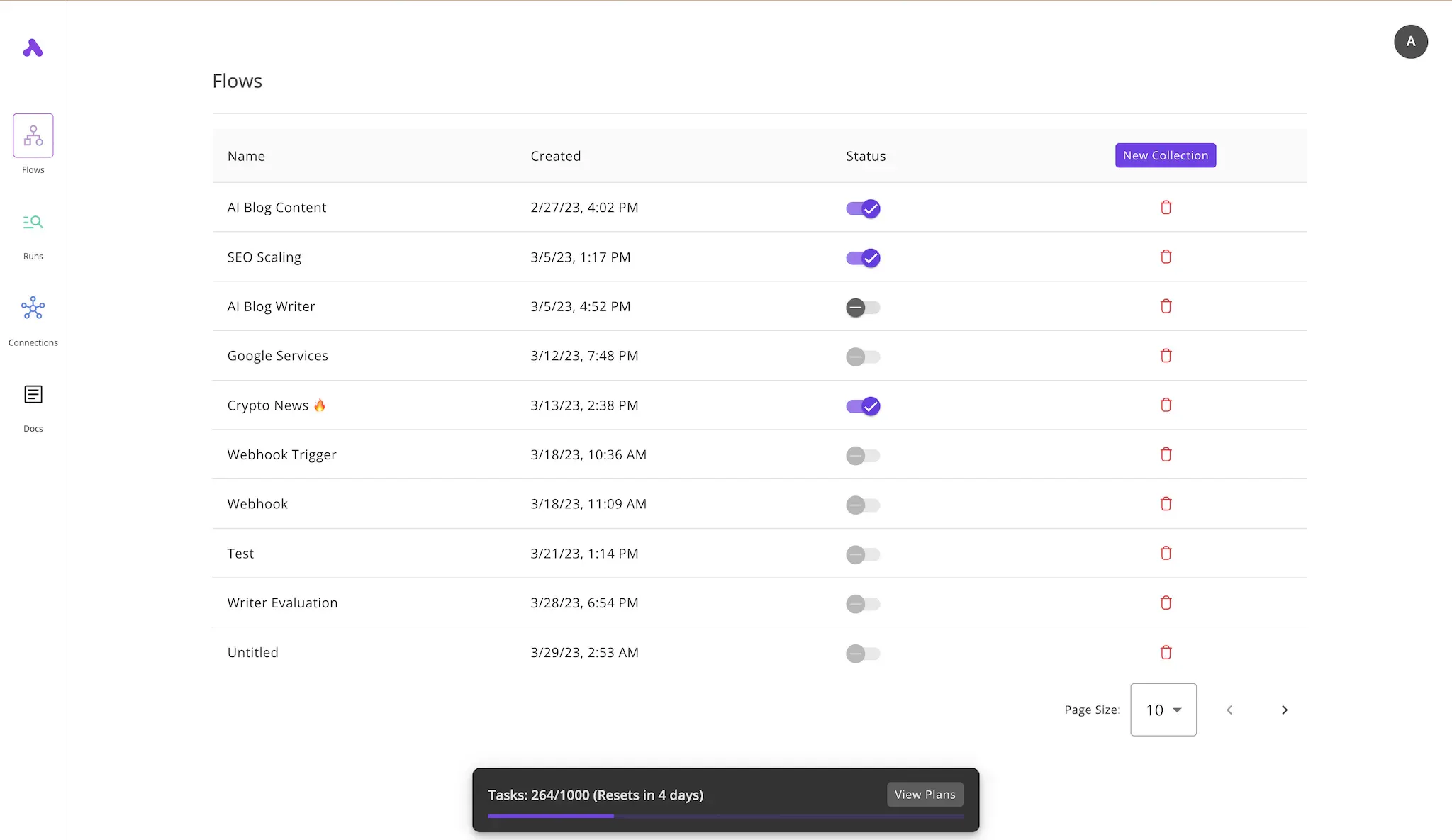
There are many Zapier competitors in the market and as you can guess, not all of these competitors are better. Some of them are more expensive or complicated.
So we tested the top Zapier alternatives so you don't, and wrote down this comparison.
Short Answer: If you are looking for a simple, modern and actively improving alternative to Zapier, we recommend Activepieces. It covers most business automation needs, and it balances the good and bad in all the options.
Zapier competitors
This is a hot topic these days. Many competitors to Zapier are in the market. Some competitors are better for bigger companies and others are better for hobbyists.
Another type of these competitors is the industry specific automation tools. We'll navigate its head to head competitors in this article.
Why find a Zapier competitor
While Zapier is a great tool, there are downsides to it. Many users are moving out of it for some of these reasons:
- Too expensive: Users find Zapier too expensive because their pricing per task is too expensive. Many users get annoyed because they have to pay a lot more if they'd like to invite their teammates.
- Their support is weak: Users find their support slow and unhelpful. Some of their support requests take several days in back and forth messages without real help.
- Advanced automations are impossible: You can't do much if your automation flow requires conditions, loops or some advanced logic. Even writing code is not very inconvenient.
- Linear flow editor is limiting: If you are a fan of flexible tools, you might dislike this. The way Zapier's editor is built limits that to a one-direction linear logic.
- Closed ecosystem: Although they promote their security standards, you can't really touch it. You can't read the engine's code to see how it exactly works or to add missing functionality to it.
Categories of Zapier competitors
After analyzing the different business automation tools in the market, we realized that most of them fall under these categories:
a) No-code automation tools for small teams
This category is ideal for small teams. It is usually economical to begin with, and anyone can sign up. These tools also have simple automation builders that can be used by non-technical users.
They typically don't work for larger teams for different reasons. For example, they can become too expensive as the company grows, or they can lack features important to larger companies.
If you're looking for a better tool compared to Zapier in this category, consider Activepieces if you prefer open ecosystems. Make is another option if you don't mind a more complicated user experience.
b) No-code automation tools for enterprise
This category usually has a website that doesn't list prices publicly and doesn't allow easy access to the product. When you talk to their sales team, the pricing point could be in the ballpark of $50k a year.
To qualify for this category, business automation tools need to have features designed to help big companies. These include audit logs, user permissions and single sign.
If you are looking for enterprise features, you should check out Workato or Tray. These are the popular tools in this category.
But if you need open source software that can be hosted on your machine and modified, check out Activepieces.
c) Automation tools for developers
Many developers prefer to write code, maybe in Python to automate their tasks. But some of them prefer to use a visual interface to build, run and monitor their automations.
This kind of tools involve more technical terms and features. Developers usually feel better about using such tools, as they are closer to their daily workflows.
In this category, users usually choose Pipedream and N8n. If you get excited about MIT-licensed open source software, that can be extended with TypeScript code, you can use Activepieces.
d) Open source automation tools
Open source is great. It means the code is public, and in that you can make changes to it. For example, you can build your company on top of an open source software.
Some of the perks of open source is that you can also host them on your own machine. If you have to stick to the data rules of your company or country, this will be a great option.
We wrote a full guide on open source alternatives to Zapier if this is what you are looking for. Activepieces is the most complete product in this category. It is actively maintained and is better than Zapier in many aspects.
Best Zapier alternatives and competitors in 2023 (ranked)
#1 - Activepieces 🥇
Activepieces is an open source no-code business automation tool designed for teams to automate their work without restrictions. It should be your first option to explore as a very strong Zapier alternative.
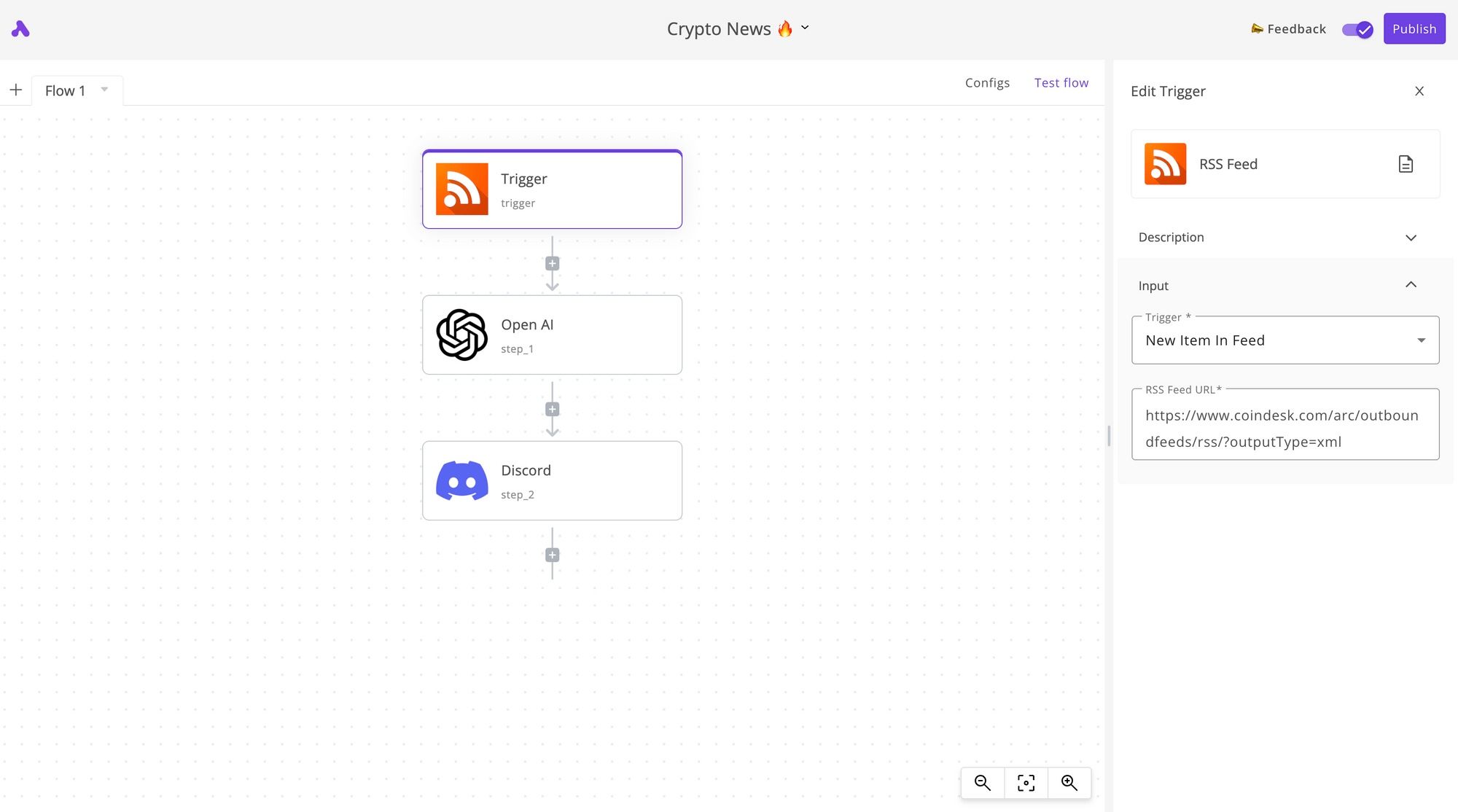
Activepieces Strength
- Loved UI: Users find the UI of Activepieces very impressive. It combines ease, simplicity and power. It's not a linear editor like Zapier's editor, nor a free canvas that can complicate your flows. This is one of the biggest advantages of using Activepieces as a no-code user.
- A privacy-first alternative: Activepieces is open source. Which means you can find the source code of Activepieces publicly. Being open source, it ensures a very high level of data privacy. If you'd like to ensure full privacy, you can even host it on your own server.
- Active community: Users had bad experience with Zapier's support, but Activepieces community is very active on Discord. The founders hang out there and everyone is ready to answer your questions.
- Fast product updates: Activepieces ships new releases very quickly. There are weekly or bi-weekly updates to the product. If any important feature is missing, you can request it and it can be shipped in the following weeks.
- A cost-effective alternative: Activepieces is priced fairly. There is a free plan and the paid plan starts at a small $9/month. It works for small and big teams.
Activepieces Weakness
- Fewer apps: Activepieces has a fewer number of 3rd party connectors than Zapier because it was created way later. However, the team ships updates very quickly and this weakness shouldn't be a dealbreaker.
- Single Sign On is missing: For teams who'd like to benefit from SSO features, it's not yet implemented on Activepieces. However, it's common that softwares add this feature as they go and as they launch.
#2 - Make
Make is another Zapier competitor. It's an automation tool that is often perceived as the cheaper version of it. Users go to Make to cut their increasing bills and because Make allows for more complex automation workflows.
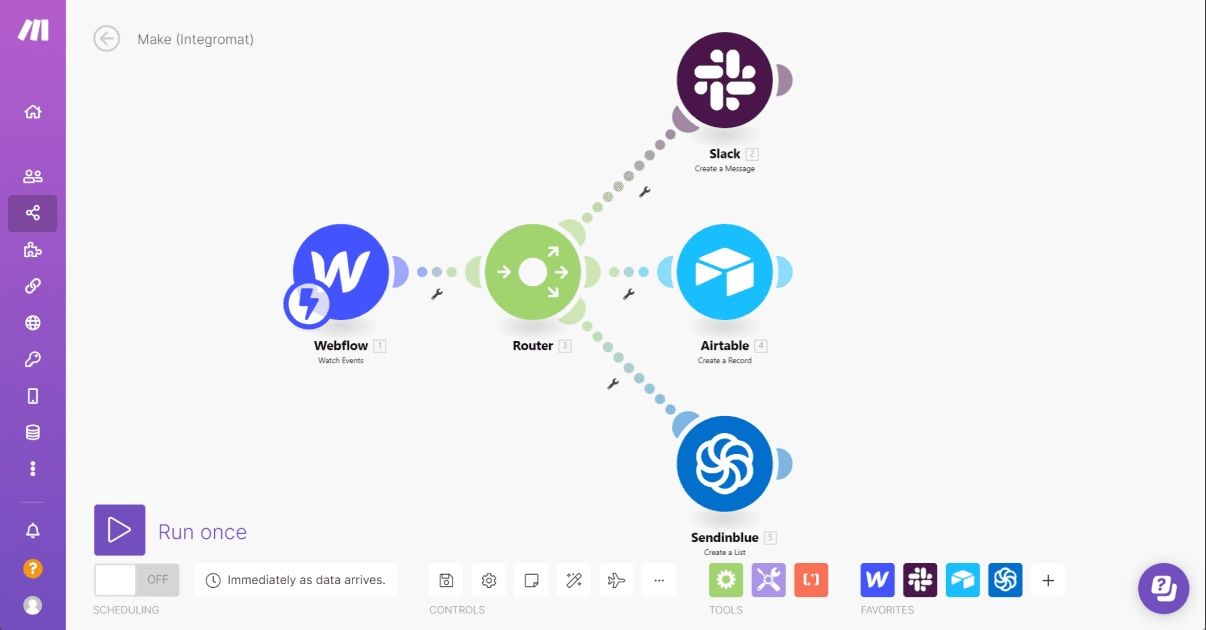
Make Strength
- Perceived as cheap: Many users turn to Make because it's positioned itself as a very cheap business automation tool.
- Large number of apps: You can expect to find your favorite apps on Make, as they have 1,400+ of them.
- Advanced automations are possible: Make has a movable canvas. You can branch out from any module and create advanced scenarios. This is also a weakness (read ahead).
Make Weakness
- Steep leaning curve: In order to use Make, you have to learn many things. For example, they have a unique unpopular naming to their elements. Some functions will also lead you to search before being able to use them.
- Make has a complex canvas: It lets you roam around, move modules, reorder them, unlink them and relink them again. While power users find all this helpful, the majority of users finding confusing and unnecessary.
- Support doesn't exist: Make users complain about its very slow support, in many internet discussions they describe it as nonexistent.
#3 - Pipedream
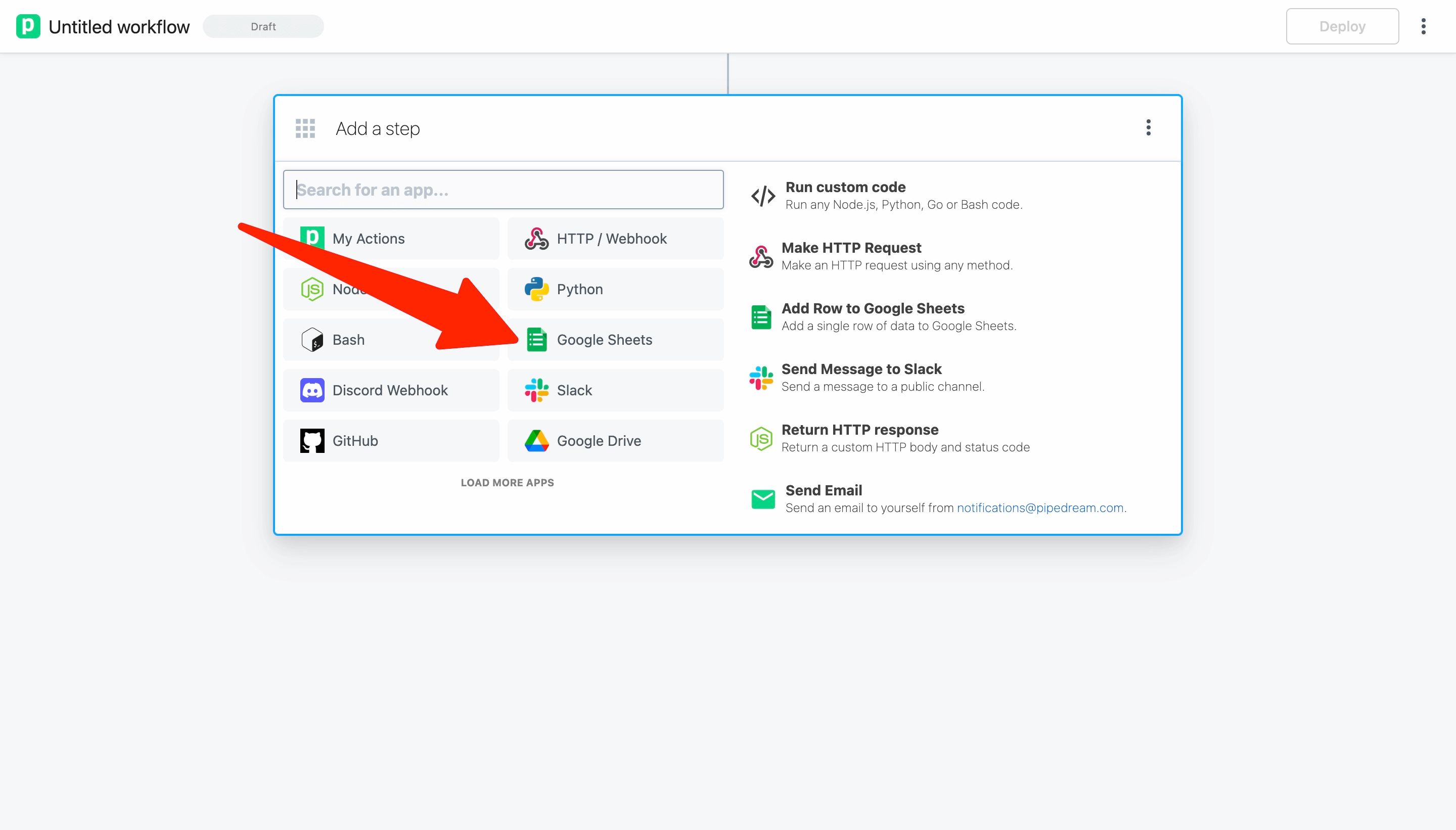
Pipedream Strength
- Developers like it: Developers like Pipedream because it focuses on pure technical functions like writing code, or sending custom HTTP requests. Its interface is also not intended to be too fancy. It looks similar to the other tools developers use for their work.
- Similar interface to Zapier: Pipedream workflows are linear as well. There is one line of sequential steps just like how Zapier looks. If you're looking for an alternative that is more technical but has a similar interface, you might feel good about Pipedream.
- Affordable pricing: Some users use Pipedream for low volume automations and it won't be too expensive for their use cases. They have a $29/month plan that works for many user segments.
Pipedream Weakness
- It has a linear editor: If you dislike the linear style in Zapier's editor, you will dislike it here too. When you build advanced flows, Pipedream gets out of the game.
- It's too technical: Users who look for no-code products don't usually like Pipedream. There is little effort done to make it an easy product for non-technical users.
- Many connectors are not usable: Some of the apps on Pipedream are auto generated. When you try to use these apps like Asana, it will ask you for IDs that you don't have on you. This makes it unusable in many cases.
#4 - Workato
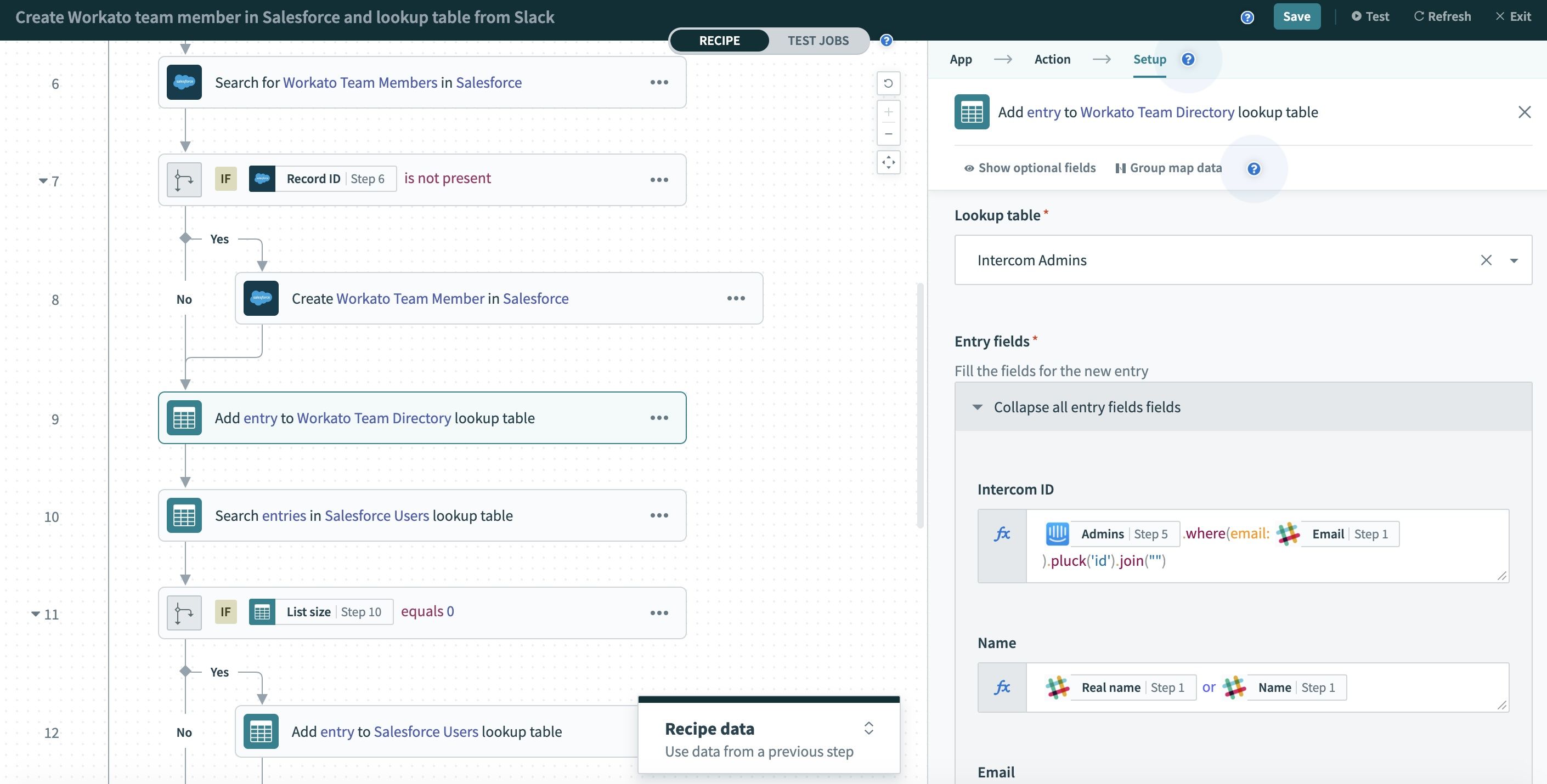
Workato Strength
- A beautiful interface: I have to admit it, Workato did a great job at designing their platform. Users like how it looks and it puts it in the premium category of automation tools. However, read the cons because maybe they did a less-good job at user experience.
- Helpful support: Since Workato sells to enterprise customers, it only makes sense to not understaff their support team. Users find their support helpful unlike the other alternatives mentioned earlier.
- Enterprise connectors available: Workato offers connectors to the most common software used at big companies including SAP, NetSuite and Salesforce.
Workato Weakness
- Expensive and not transparent: They don't list transparent pricing on their website. When you talk to their sales, you should expect getting a quote starting at $30k per year.
- Steep learning curve: Workato has a pretty interface, but many users complain about its usability. You need to learn some concepts and procedures to get your recipes done on Workato.
- Closed sign up: You can't get an account from their website. You have to talk to a sales representative, get a quote from them and get your trial account if possible.


